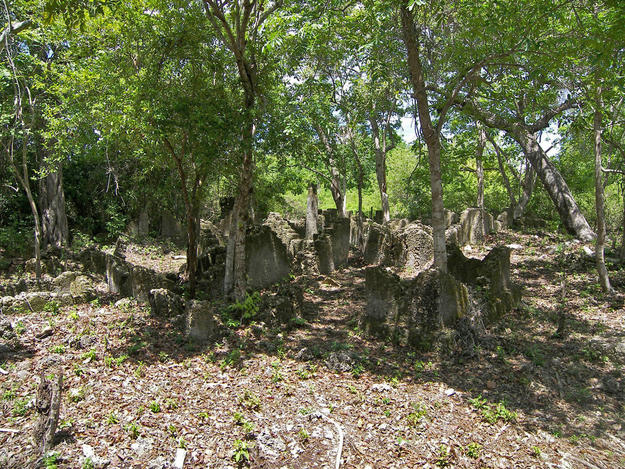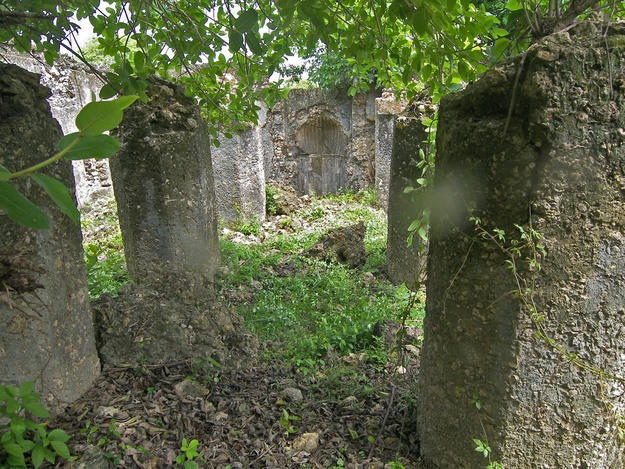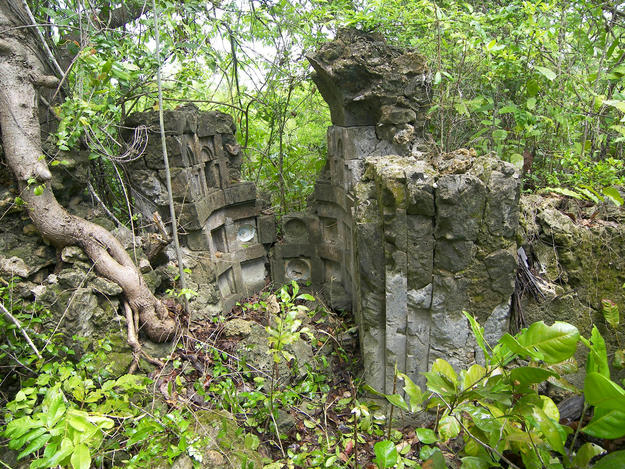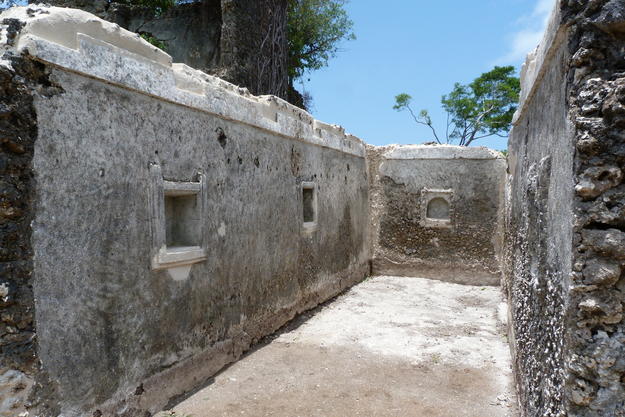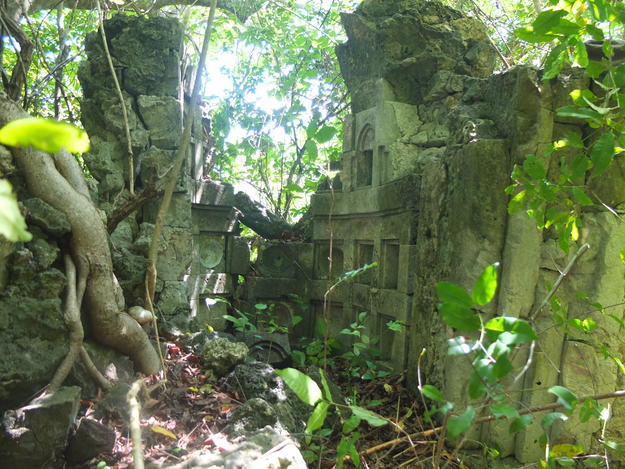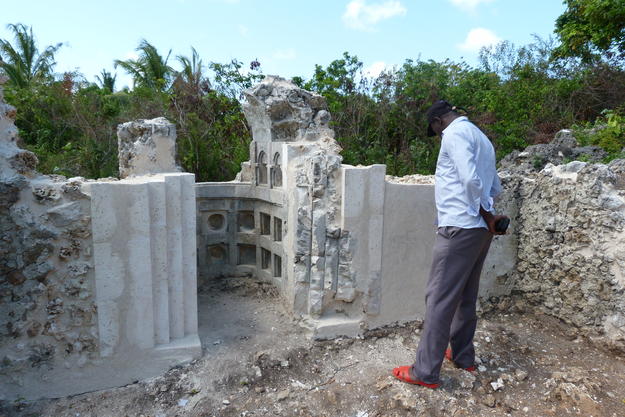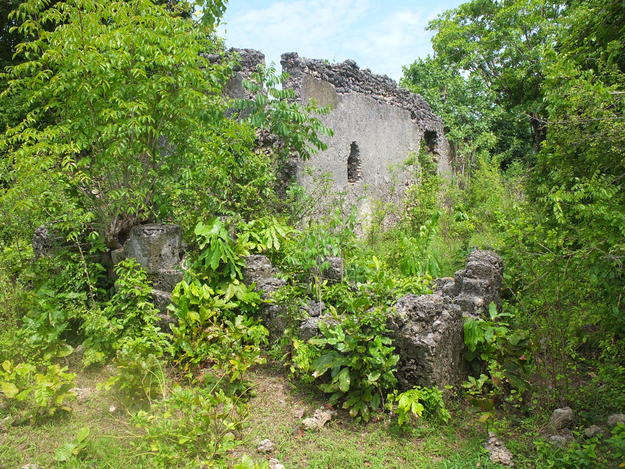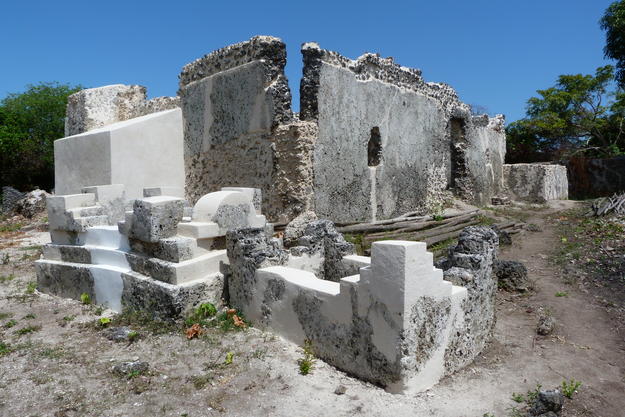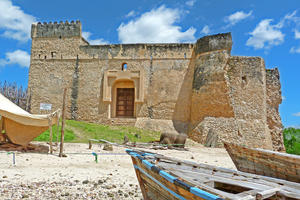Kua Ruins
About the Kua Ruins
Located on Juani Island in the Mafia Archipelago, the Kua ruins are all that remains from a medieval Swahili town. They offer insight into an island civilization that saw Portuguese and Omani control as well as independence, enslavement, and eventual abandonment. Indicators of early settlement and trade—including Islamic and Chinese ceramics dating to the thirteenth and fourteenth centuries and currency from mainland Tanzania—have been found in the ruins, while Portuguese accounts from the sixteenth century note the great wealth of the Kua people.
The surviving structures at Kua include the ruins of residences, mosques, and what is believed to have been the sultan’s palace. Building materials include coral, lime, and wood, with mangrove and thatched roofs. Many of the standing ruins could collapse at any time, while the site as a whole is threatened by the continued effects of a harsh climate and destruction at the hands of explorers digging for fabled Swahili treasures. Unmanaged tourism from nearby resorts and potential commercial development put centuries of heritage at risk. Local villagers, mostly subsistence fishermen, are aware of the significance of the ruins but are unable to maintain them.
2016 World Monuments Watch
The site was included on the 2016 World Monuments Watch in support of the steps that have been taken to document the Kua ruins and develop sustainable mechanisms for conservation and ongoing protection. Goals include the creation of appropriate visitor infrastructure and a site management plan that balances the competing demands of tourism, economic development, training, and heritage preservation while building local capacities.
Building local capacities through conservation
In 2017, WMF was awarded a grant by the Ambassadors Fund for Cultural Preservation to undertake a pilot preservation and community engagement project at the Kua ruins. The project sought to engage residents of Juani Island, where Kua is located, in the preservation, protection, and development of the site as a visitor destination that would directly benefit the local community.
The initial phase of the project, completed in January 2019, established a community-based organization (CBO) called the ‘Kua Ancient Swahili Town Conservation Society’, which is focused on heritage. The CBO facilitated the community’s participation in the conservation work carried out on the ruins—over 235 people have been employed in some way during implementation of the project, with jobs ranging from rotational workers and cooks, to carpenters and guards, and more. Conservation work has been completed at 13 structures, including six mosques with adjacent tombs, six houses, and one cemetery. A significant amount of the site has been cleared of invasive vegetation, revealing many more structures, including the discovery of another mosque.
A second grant awarded by the Ambassadors Fund for Cultural Preservation in 2020 will allow WMF to build on the achievements and momentum of the first phase, focusing on community participation in ongoing care of the site, continued physical conservation and improving the visitor experience. By engaging the community’s participation in the conservation work, WMF seeks to foster positive change in the community on Juani Island and responsible stewardship of the site.
World Monuments Fund's work at Kua Ruins has been made possible, in part, by support from the U.S. Ambassadors Fund for Cultural Preservation (AFCP) and the U.S. Embassy Dar Es Salaam.

